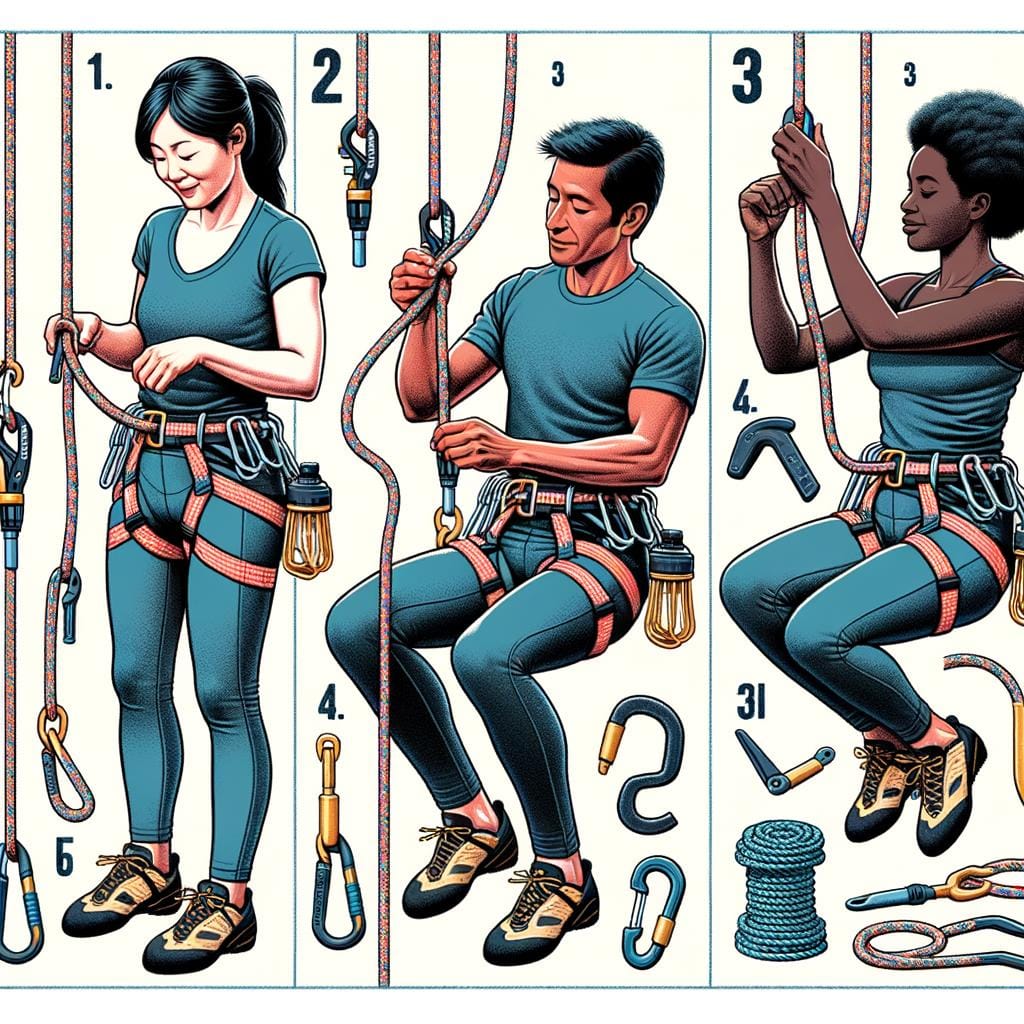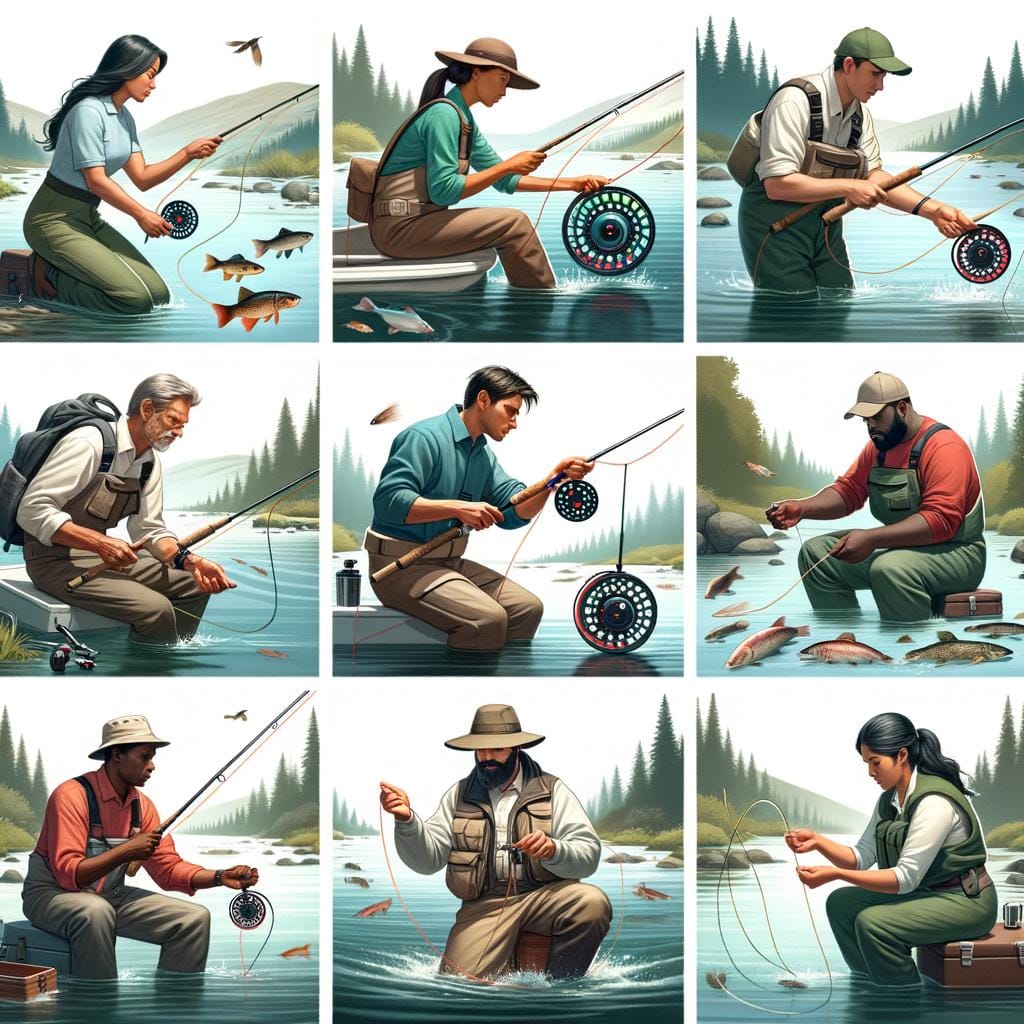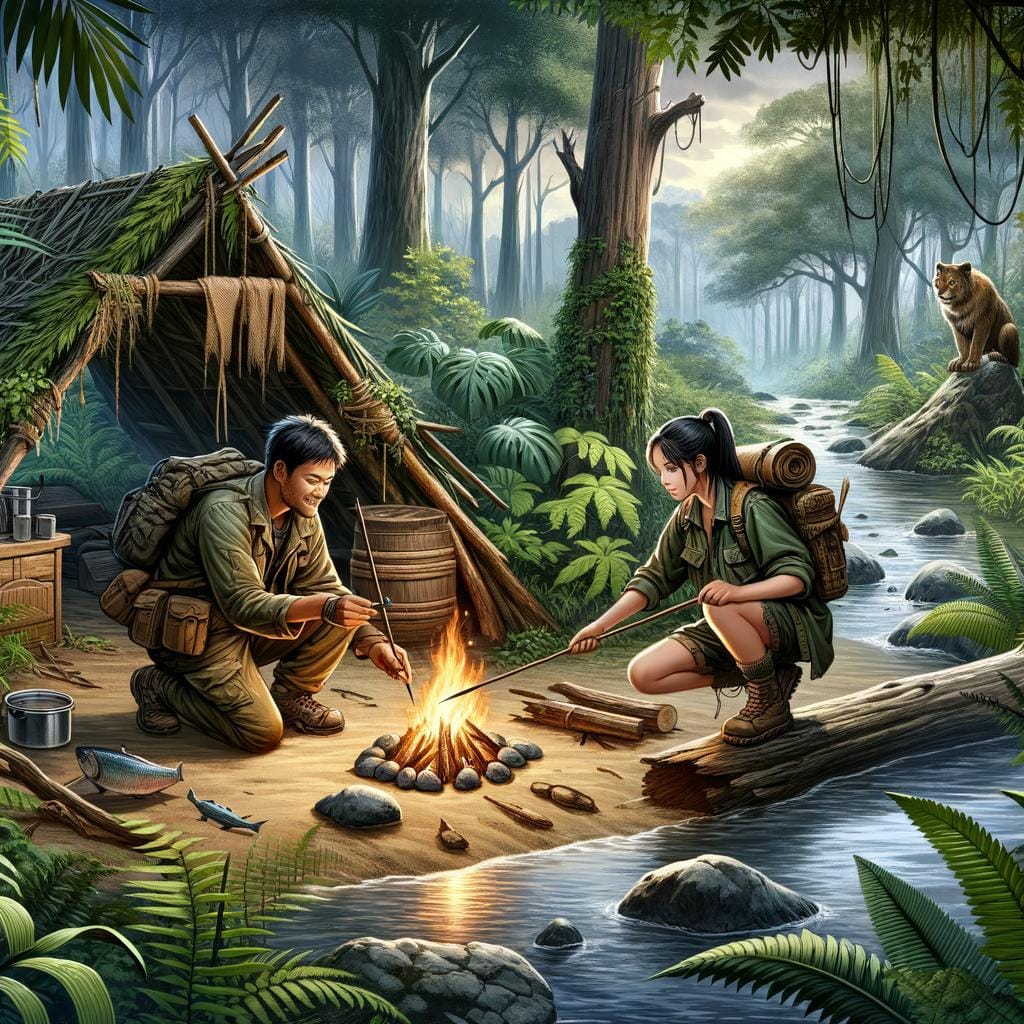When venturing into the great outdoors, having a solid understanding of outdoor survival techniques is essential for ensuring your safety and well-being. From navigating through unfamiliar terrain to finding food and water sources, being equipped with the necessary skills can make all the difference in a challenging situation. In this article, we will explore the fundamental principles of outdoor survival techniques that every outdoor enthusiast should know.
Understanding basic survival skills is crucial for anyone who spends time in nature. Knowing how to build a shelter, find water sources, start a fire, navigate without GPS, and administer first aid can mean the difference between life and death in an emergency. Whether you are an experienced hiker or a beginner camper, having these skills in your arsenal can help you face unexpected challenges with confidence.
Building on these basic survival skills, we will delve into more specific techniques such as building shelters using natural materials, locating and purifying water sources in the wild, starting fires using primitive methods or modern tools, reading maps and using compasses for navigation, identifying edible plants and insects for sustenance, and administering first aid for common injuries and illnesses encountered outdoors.
By mastering these skills, you can be better prepared to handle any situation that may arise during your outdoor adventures.
Basic Survival Skills Every Outdoor Enthusiast Should Know
When venturing into the great outdoors, having basic survival skills is essential for staying safe and prepared for any situation that may arise. Whether you are going on a day hike or an extended camping trip, knowing these fundamental outdoor survival techniques can make all the difference in your experience.
Here are some of the basic survival skills every outdoor enthusiast should know:
- Understanding the rule of three: Knowing that you can survive for about three minutes without air, three hours without shelter in extreme conditions, three days without water, and three weeks without food can help guide your priorities in a survival situation.
- Building a shelter: Whether it’s creating a simple lean-to with branches and leaves or setting up a tarp shelter, knowing how to protect yourself from the elements is crucial for survival.
- Finding and purifying water: Water is essential for survival, so knowing how to locate and safely consume water sources in the wild is a vital skill. Methods for purifying water include boiling, using water purification tablets, or constructing a DIY filter.
Having a solid foundation in these basic survival skills can give outdoor enthusiasts the confidence and ability to handle unexpected challenges that may arise in the wilderness. By being prepared and knowledgeable about outdoor survival techniques, adventurers can truly enjoy their time exploring nature while staying safe and secure.
Building Shelter
When venturing into the great outdoors, one of the most crucial skills to possess is the ability to build a shelter. Whether you are faced with unexpected weather conditions, getting lost, or simply needing a place to rest, having the knowledge to construct a shelter can mean the difference between life and death. Here are some essential tips and tricks for staying safe in the wilderness:
- Know Your Surroundings: Before setting out on your outdoor adventure, familiarize yourself with the terrain and potential hazards in the area. This will help you choose the best location to build your shelter, such as avoiding low-lying areas that could flood during rainstorms.
- Use Natural Materials: When building a shelter in the wilderness, make use of natural materials around you like branches, leaves, and rocks. These items can provide insulation and protection from wind and rain. Remember to avoid using any toxic plants or materials that could harm you.
- Consider Different Shelter Designs: Depending on the situation you find yourself in, different types of shelters may be more suitable. From basic lean-tos and debris huts to more intricate tarp shelters or tree branch frameworks, it’s crucial to have a few shelter-building techniques up your sleeve.
Remember that building a shelter is not just about protection from the elements; it also provides a psychological boost by creating a sense of security and stability. Mastering this skill will enhance your outdoor survival techniques repertoire and increase your chances of making it through unexpected situations while exploring nature.
Finding and Purifying Water in the Wild
Water is essential for survival, and knowing how to find and purify it in the wild is a crucial outdoor skill. Whether you’re on a day hike or a multi-day backpacking trip, understanding water sources and methods for making it safe to drink can make all the difference in a survival situation.
Finding Water Sources
When in the wilderness, knowing where to find water sources is key. Look for signs of water such as lush vegetation, animal tracks leading to a stream, or low-lying areas where water may collect. Keep in mind that not all water sources are safe to drink from, so it’s important to know how to purify it before consuming.
Purifying Water
There are various methods for purifying water in the wild, such as boiling, using water purification tablets or filters, or even constructing a makeshift solar still. Boiling is one of the most effective ways to kill harmful bacteria and parasites present in untreated water. Water purification tablets are also handy as they are lightweight and easy to carry in your outdoor pack.
Additionally, investing in a portable water filter can provide you with safe drinking water on the go. Remember that purifying water is essential for preventing illnesses that can hamper your ability to survive in the outdoors.
Fire Starting Techniques
When it comes to outdoor survival techniques, one of the most crucial skills to have is the ability to start a fire. In emergency situations, fire can provide warmth, signal for help, cook food, and even purify water. There are various methods for starting a fire in the wilderness, ranging from primitive techniques such as friction-based methods like bow drill or hand drill to modern tools like ferrocerium rods or waterproof matches.
One of the traditional ways to start a fire without any tools is through friction-based methods like the bow drill. This method involves using a spindle and a hearth board to create friction by rapidly spinning the spindle with a bow until an ember forms.
However, this technique requires practice and patience as it can be physically demanding and time-consuming. On the other hand, modern tools like ferrocerium rods produce hot sparks when struck with a sharp edge, making them an efficient and reliable way to ignite fires in any weather conditions.
In addition to knowing how to start a fire, it’s essential to be prepared by carrying multiple fire starters in your outdoor survival kit. Some lightweight and compact options include waterproof matches, disposable lighters, or chemical tinder tabs. By having these essential tools on hand and practicing different fire starting techniques beforehand, outdoor enthusiasts can increase their chances of staying warm and safe during unexpected situations in the wild.
| Fire Starting Methods | Advantages |
|---|---|
| Bow Drill | Traditional method that does not require tools |
| Ferrocerium Rods | Efficient way to produce hot sparks in all weather conditions |
| Waterproof Matches | Reliable option for igniting fires even in damp environments |
Navigating Without GPS
Navigating through the wilderness without the aid of GPS can be a daunting task for many outdoor enthusiasts. However, mastering essential map reading and compass skills is crucial for anyone looking to venture into the great outdoors. By understanding how to interpret maps and use a compass effectively, you can ensure that you never get lost in the wild.
Understanding Topographic Maps
Topographic maps are an indispensable tool for navigating through rugged terrain. These maps provide detailed information about elevation changes, landmarks, water sources, and vegetation. By learning how to read contour lines, identify key features, and understand scale representations on a topographic map, outdoor enthusiasts can effectively plan their routes and avoid getting disoriented in unfamiliar surroundings.
Using a Compass
A compass is another essential navigation tool that every outdoor adventurer should know how to use. By knowing how to orientate a map with a compass, determine directions accurately, and navigate based on magnetic north, you can confidently find your way through dense forests or remote mountain ranges. Additionally, understanding declination – the difference between true north and magnetic north – is important for precise navigation when using both map and compass together.
Putting It All Together
Combining map reading skills with using a compass effectively is key to successful navigation in the outdoors. Before embarking on any adventure, take time to study maps of the area you will be exploring, identify prominent landmarks or features that will help guide you along your route.
Practice using your compass in various locations to gain confidence in determining direction and staying oriented. With these essential outdoor survival techniques in hand, you can explore the wilderness with greater ease and security.
Wilderness First Aid
When venturing into the great outdoors, being equipped with wilderness first aid knowledge is essential for any outdoor enthusiast. Injuries and illnesses can happen unexpectedly, and having the skills to address them can make a significant difference in an emergency situation. From minor cuts and bruises to more serious wounds or ailments, being prepared with the necessary first aid techniques can potentially save lives in remote wilderness areas.
One critical aspect of wilderness first aid is understanding how to assess injuries or illnesses effectively. This includes recognizing the signs and symptoms of common outdoor-related conditions such as hypothermia, heat exhaustion, snake bites, or sprains. By knowing what to look for, outdoor adventurers can act promptly and provide appropriate care before seeking professional medical help.
In addition to injury assessment, outdoor enthusiasts should also be proficient in basic first aid procedures such as wound cleaning and dressing, splinting fractures, managing minor burns, and CPR techniques. These skills are invaluable when professional medical assistance is not readily available in remote outdoor settings.
Understanding how to react calmly under pressure and make quick decisions can be crucial when providing immediate care using limited resources. By familiarizing oneself with these wilderness first aid techniques, outdoor enthusiasts can confidently navigate through challenging situations while exploring nature’s beauty.
Survival Food
When it comes to outdoor survival techniques, knowing how to identify edible plants and insects in the wild is a crucial skill that can mean the difference between going hungry or staying nourished. In a survival situation where food sources are scarce, being able to forage for food can be a lifesaver. However, it is important to approach this task with caution and proper knowledge to avoid consuming anything that could be harmful.
One key principle to keep in mind when foraging for survival food is to positively identify plants before consuming them. Many edible plants have toxic look-alikes that can be dangerous if ingested. It is recommended to carry a guidebook on edible plants specific to the region you are exploring, or better yet, take a course on wilderness foraging before venturing out into the wilderness.
In addition to plants, insects can also serve as an important source of protein in a survival situation. While the thought of eating insects may not be appetizing to everyone, they can provide valuable nutrients when other food sources are limited. Some commonly eaten edible insects include grasshoppers, crickets, and mealworms. Knowing how to safely catch, prepare, and consume these insects can greatly enhance your chances of survival in the wild.
| Edible Plant/Insect | Nutritional Value |
|---|---|
| Dandelion | Rich in vitamins A and C |
| Crickets | High in protein and healthy fats |
Conclusion
In conclusion, mastering outdoor survival techniques is essential for anyone who ventures into the wilderness. From basic skills like starting a fire and finding water to more advanced knowledge in first aid and navigating without GPS, being prepared can make all the difference in a life-threatening situation. Whether you are an experienced outdoorsman or a beginner hiker, having the necessary skills and knowledge can help you stay safe and enjoy your adventures to the fullest.
Building shelter, finding and purifying water, starting a fire, navigating using maps and compasses, knowing how to administer first aid in emergencies, and identifying edible plants are all crucial aspects of outdoor survival. Being equipped with these skills not only increases your chances of survival but also allows you to have a deeper connection with nature and appreciate the beauty of the wilderness even more.
As outdoor enthusiasts, it is our responsibility to respect nature and be prepared for any challenges that may come our way. By taking the time to learn and practice outdoor survival techniques, we can embark on our adventures with confidence and peace of mind. Remember, being prepared is not just about surviving; it’s about thriving in the great outdoors. So go out there, explore new territories, but always remember to prioritize safety by honing your outdoor survival skills.
Frequently Asked Questions
What Are the 5 Most Important Survival Skills?
The five most important survival skills include shelter building, fire starting, water procurement, food foraging, and navigation. These skills are crucial in ensuring one’s basic needs are met in a survival situation.
What Are the 5 Rules of Survival?
The five rules of survival are to stay calm and positive, assess your situation realistically, make a plan based on priorities, take decisive action to ensure your safety, and never give up hope. Following these rules can greatly increase your chances of survival.
How Do I Learn Outdoor Survival?
Learning outdoor survival skills can be achieved through taking courses taught by experienced instructors, reading books on the subject matter, watching online tutorials or videos, practicing the skills regularly in the wilderness with proper gear and equipment, and seeking mentorship from seasoned outdoorsmen or survivalists. Consistent practice and hands-on experience are key to mastering outdoor survival techniques.

An avid outdoor enthusiast, writer, and environmental advocate who has spent over two decades exploring the world’s most breathtaking landscapes. With a background in environmental science and a passion for adventure, Frances combines her love for nature with her talent for storytelling to inspire others to embark on their own outdoor journeys.





